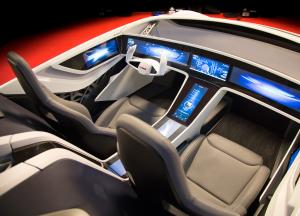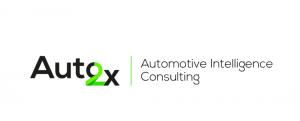Top-5 new changes in 2021 transforming Autonomous Driving
Auto2x’s new report Intelligent, Autonomous & Secure Car discusses the biggest changes in Autonomous driving in 2021.
LONDON, UK, December 7, 2020 /EINPresswire.com/ -- 1. Regulation will finally allow Level 3 autonomous driving from 2021
In Europe, Japan, and China, Type approval of SAE Level 3 autonomous driving features, such as Audi’s AI Traffic Jam Pilot, is not allowed today requiring the amendment of UN Reg. No.79. The delay of the amendment of R79 is blocking Audi’s Lv.3 deployment strategy since 2018 until the UNECE-Automated Lane Keeping Systems regulation comes to force in Jan’21. We see Europe and Japan benefiting from the changes in regulation due to the combination of technological capabilities in Level 3 from their domestic carmakers and the favorable political framework to remove roadblocks and establish their respective markets as key innovation hubs.
Germany and Japan are early adopters
Europe is the leading geography in terms of penetration of ADAS technology, thanks to innovation primarily from German carmakers. Lv.2-D availability in Europe reached 91 models in 2019 as Volume brands such as Renault, Citroen and Honda introduced Traffic Jam Assist features. Mercedes has already stated that its new S-Class equipped with the new DRIVE PILOT will switch on Level 3 by late ’21 on suitable highways in Germany. We expect Audi, and BMW to join Mercedes-Benz among the first carmakers to activate Level 3 via Over-the-Air-Updates in Europe.
Before the pandemic hit, Japan aimed to align its Autonomous Driving regulatory framework with Europe aiming to unlock Lv.3 for the 2020 Tokyo Olympics. In Jan’20, Japan even announced safety standards for Lv3. We expect that Level 3 demonstrations in Japan during the 2021 Tokyo Olympics will demonstrate its technological innovation led by Nissan who will offer its first Level 3 Pro-Pilot feature in the Skyline.
To learn more about competition and market developments in the next decade read our report 30 Carmakers’ Roadmaps in Automated Driving up to 2025.
2. Insurance to take a hit – market education needed
Level 3-Autonomous Driving presents a challenge to traditional vehicle insurance due to its implications for the determination of liability. In Level 3, the transfer of vehicle control from the driver to the Automated Driving System has implications for the determination of liability since the driver is still the ultimate back-up. This also creates insurance challenges for higher levels of automation.
More specifically, since the Liability framework for Level 3 is still largely unconfirmed, insurance tools are not in place for this level of automation. The above challenges the development of Level 2 and Level 3 features by manufacturers. However, carmakers, including Audi and Volvo have claimed that they will be accountable for potential failures when their ADS are active.
The ALKS regulation mandates vehicles to be equipped with a Data Storage System for Automated Driving — the so-called “black box” — which will record when ALKS is activated. Car manufacturers must also introduce Driver Availability Recognition Systems, which monitor seatbelt use and monitor the driver’s capability to take back control of the vehicle, including through spotting eye blinking and closure.
Among automotive industry associations, the GEAR 2030 has expressed the views that “motor insurance and product liability directives are sufficient for upcoming systems, whereas harmonisation of national liability regimes is neither needed nor feasible for the upcoming systems in 2020”.
We see the need for adequate education of drivers, from both carmakers as well as rating associations such as the NCAP to help them understand their legal requirements and avoid consumer confusion over driver responsibilities or even misuse resulting from “mode confusion”.
3. Cyber Security moves from afterthought to the top of the agenda
Over the next decade, as transportation progresses from Connected and Partially-Automated to Highly and Fully-automated, Smart and Shared Mobility, the addition of new sensors and ECUs, new architecture, more Connected devices, and V2X will significantly enlarge the vehicle ‘’attack surface”. Identifying, mitigating, and responding to cyber threats will not only be paramount for physical road and vehicle safety but also a prerequisite for the transition towards self-driving cars.
ALKS will also need to comply with cyber-security and software update requirements set out in two other new U.N. regulations. In more detail, two new regulations on automotive cyber security and software updates to establish clear performance and audit requirements for OEMs are coming into effect in Jan’21.
• The first is the “UN Regulation on Cybersecurity and Cyber Security Management Systems” and the
• 2nd the “UN Regulation on Software Updates & Software Updates Management Systems”.
To better understand the changing legislation read our report Regulatory roadmaps to Autonomous Driving, Automotive Cyber Security, V2X & AI.
4. ADAS Suppliers poised for growth but they will face even tougher competition
ADAS suppliers are well-positioned to monetize the revenue growth coming from the proliferation of ADAS. They have significant expertise in the design, development, and delivery of components for ADAS and/or ADAS features, which gives them an edge over many OEMs.
Leading ADAS suppliers are in a unique position to supply multiple OEMs with technology which provides them with a wide customer base but they also can sell their ADAS portfolio directly. Furthermore, leading Tier-1s have announced a continuing investment in human capital and expansion of production capacity, especially for radars and Lidar sensors. Last but not least, leading ADAS suppliers to have a well-diversified revenue base and additionally worldwide presence to capitalize on growth in different regions, i.e. currently in advanced car markets which account for most of ADAS revenues but later on in emerging car markets so the highest growth potential.
Fighting off new entrants: new expertise & collaborative business models needed
As mobility shifts from product to service, the world’s biggest automotive suppliers are striving to develop capabilities in AI & software. Bosch is committed to investing 300 million euros by 2021 in the development of the Bosch Center of Artificial Intelligence which already operates in India, the U.S., and Germany. But even though they invest heavily to support the autonomous driving and connectivity roadmaps of carmakers, tech giants entering the mobility space seem to be closer to bring new services to the market.
Auto2x, Automotive Intelligence & Consulting
Auto2x Ltd
+44 7825 686532
info@auto2xtech.com
Visit us on social media:
LinkedIn
Legal Disclaimer:
EIN Presswire provides this news content "as is" without warranty of any kind. We do not accept any responsibility or liability for the accuracy, content, images, videos, licenses, completeness, legality, or reliability of the information contained in this article. If you have any complaints or copyright issues related to this article, kindly contact the author above.



